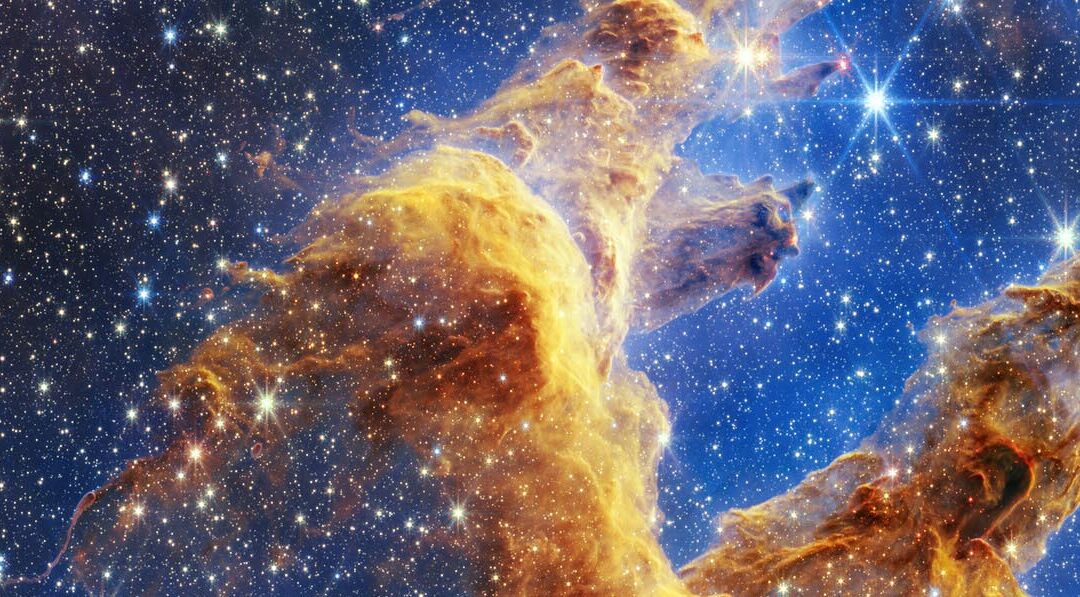Since funerals services in intricately involved with the cycle life and death daily, I thought it would be interesting to take a step back and look at the big picture. Let’s look on a stellar scale.
The Pillars of Creation is a star-forming region located in the Eagle Nebula (M16) in the constellation Serpens, it is about 7000 light years from earth. The name “Pillars of Creation” was given to this region because it contains several large columns of gas and dust that are being sculpted and shaped by the intense radiation and stellar winds of the young, massive stars that are forming within the region.
The Pillars of Creation are one of the most iconic and well-known features of the Eagle Nebula, and they have been the subject of many stunning images captured by telescopes and spacecraft. These columns of gas and dust are each several light years in length, and they are being eroded and sculpted by the intense radiation and winds of nearby hot, young stars.
The Pillars of Creation are an important site of ongoing star formation, and they provide astronomers with a unique laboratory to study the process of star birth and the complex interactions between young stars and their environment.
Here is a brief summary of the types of stars and the elements they generate through nuclear fusion in their cores:
Low-mass stars (less than 2 solar masses): These stars generate energy and create new elements primarily through the proton-proton chain reaction, which fuses hydrogen into helium. As the star evolves, it may also generate elements like carbon, nitrogen, and oxygen through the triple-alpha process, which fuses three helium nuclei together.
Intermediate-mass stars (between 2 and 8 solar masses): These stars generate heavier elements like neon, magnesium, and silicon through a combination of the proton-proton chain and the carbon-nitrogen-oxygen cycle. As the star evolves, it may also generate elements like iron and nickel through fusion reactions in its core.
High-mass stars (more than 8 solar masses): These stars generate a wide range of elements, from carbon to uranium. They generate energy and create new elements through a combination of the CNO cycle and the alpha process, which fuses helium into heavier elements. In the later stages of their lives, these stars undergo a series of nuclear reactions that generate even heavier elements, including gold, platinum, and uranium.
Supernovae: When high-mass stars explode as supernovae, they release vast amounts of energy and create even more elements, including the heaviest elements like plutonium and curium. These elements are ejected into space and can become part of the material from which new stars and planets form.
It’s important to note that this is a simplified summary and that the actual processes involved in element generation can be quite complex. However, this should give you a general idea of the types of stars and the elements they generate.
Hopefully the above help to put some things in perspective.

